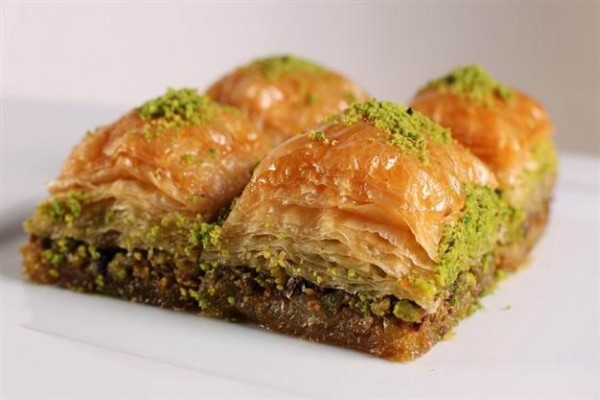Turkish Baklava

The Ottoman Period and Baklava
Baklava is a dessert claimed by many Central Asian nations as part of their culinary heritage and while the debate goes on; it is fair to say the baklava has a history in Turkey especially from the Ottoman period. The first mention of this delicious dessert is from kitchen notes in the Fatih period circa 1473. A report from the middle of the 17th century by Evilya Celebi records that baklava was served to guests at the circumcision celebrations of the sultans four sons. Popular as a dessert for the rich and wealthy, cooks had to prove their skill at preparing baklava and pilav before gaining a position. For a time, baklava was known as ‘rikak baklava’. Rikak being an old Arabic word for thin, possibly indicating the thinness of the sheets of dough. The thinner dough sheets being preferred by the elite of the Ottoman Empire. Burhan Oguz in his book on the cultural roots of Turks writes that to have a cook who could prepare very thin baklava sheets, about 100 per tray, was considered great prestige. Baklava so prepared would be brought to the guests prior to baking and the house owner would drop a gold coin in to the baklava. If the coin reached the tray the cook received it as a gift, if it didn’t it was a source of embarrassment for the owner and considerable problem for the cook!!
Baklava on Parade
As we have seen baklava was more than just a dessert it was a symbol of one’s wealth and position in society. Found in the palace as well as in the mansions of the wealthy; some baklava cooks spent a lifetime learning the skills of making baklava dough as thin as a rose petal. In the late 17th century a baklava parade became a traditional sight in Istanbul on the 15th day of Ramadan. On this day the sultan visited the cloak of Mohammed (hırka-i şerif) and baklava was sent as a gift to the Janissary & soldier barracks. One tray for every 10 soldiers, was collected from the palace. They would all line up and the soldiers would carry the baklava in formation with their Chief heading the march. They would then carry the trays to their own barracks through Istanbul where a crowd often gathered to watch the spectacle. The last parade was on 21st April 1826 just prior to the abolishment of the Janissaries. Whilst the parade no longer exists baklava continues to be a dessert associated with the holy month of Ramadan, along with other important ceremonies and occasions and chefs still compete to prepare the thinnest dough and delectable filling.
